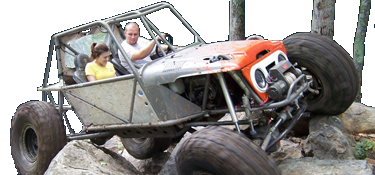- Joined
- Mar 20, 2005
- Location
- Hendersonville, NC
Part deux, people
Working on @farmboy's 14 Bolt rear lately. The most recent work was installing the ARB and ring and pinion. I won't bore you want the bolting the ring gear to the carrier. Just use Loctite and torque it to spec.
Started by bolting the pinion support to the housing and adding 5 thousanths depth shim. It's been my experience 14 Bolts with aftermarket gears require 0-10 thou.
Then I dropped in the ARB and ring gear. Granted diffs that use threaded adjusters are easier to setup, but still require some skills. Here ya go
Dropped in the carrier and moved the ring gear towards the pinion with the adjusters. When I was close, I tightened the other adjuster a bit to better seat that bearing. Once seated and smooth, I continued adjusting the ring gear side until zero backlash was attained. I could spin it, but there was 0 BL. This is where you smack the ring with a dead blow to take out any free play, sure enough there was still a little wiggle. Another few turns seated it with no BL.
Now you are ready to add backlash and also preload the carrier. I do so by using a spanner wrench and tightening the non-ring gear (NRG) adjuster. I put all my weight into it and then hit it with a dead blow. Sure enough, 0.008" BL was achieved. Tightening the NRG adjuster will push the ring gear away (backlash) from the pinion. At the same time, it preloads the two carrier bearings by pushing them into the races and housing.
Preload will help keep the carrier from deflecting under load and also achieve proper bearing wear and life. Don't be a hack and use a screwdriver and a hammer. Invest a few bucks in a decent spanner of some kind. It won't look as skoady this way.
Here some pics to look at while I post about the pattern.





Working on @farmboy's 14 Bolt rear lately. The most recent work was installing the ARB and ring and pinion. I won't bore you want the bolting the ring gear to the carrier. Just use Loctite and torque it to spec.
Started by bolting the pinion support to the housing and adding 5 thousanths depth shim. It's been my experience 14 Bolts with aftermarket gears require 0-10 thou.
Then I dropped in the ARB and ring gear. Granted diffs that use threaded adjusters are easier to setup, but still require some skills. Here ya go
Dropped in the carrier and moved the ring gear towards the pinion with the adjusters. When I was close, I tightened the other adjuster a bit to better seat that bearing. Once seated and smooth, I continued adjusting the ring gear side until zero backlash was attained. I could spin it, but there was 0 BL. This is where you smack the ring with a dead blow to take out any free play, sure enough there was still a little wiggle. Another few turns seated it with no BL.
Now you are ready to add backlash and also preload the carrier. I do so by using a spanner wrench and tightening the non-ring gear (NRG) adjuster. I put all my weight into it and then hit it with a dead blow. Sure enough, 0.008" BL was achieved. Tightening the NRG adjuster will push the ring gear away (backlash) from the pinion. At the same time, it preloads the two carrier bearings by pushing them into the races and housing.
Preload will help keep the carrier from deflecting under load and also achieve proper bearing wear and life. Don't be a hack and use a screwdriver and a hammer. Invest a few bucks in a decent spanner of some kind. It won't look as skoady this way.
Here some pics to look at while I post about the pattern.

